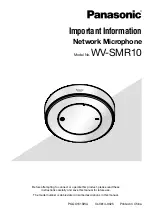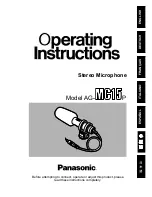
12
Acoustic Guitar
There are a variety of ways that the CV3 can be used to mic an acoustic guitar The correct placement will depend on the
type of instrument and what kind of sound you’re looking to capture, for example the tonal quality you want to focus
on, and how much finger slide or pick noise you may or may not want When miking a standard steel string acoustic, a
good place to start is with the microphone positioned pointing towards the end of the fingerboard at a distance of about
6 inches to 2 feet away from the instrument You can experiment by moving the microphone slightly in the direction
of the sound hole, which will produce more low frequencies, or move it in the direction of the 12th fret to capture more
high-end or to remove any unwanted boominess For nylon string acoustic, try positioning the microphone above the
bridge to emphasize more of the attack from the sound of the finger picking, or for less, move the mic closer to the
sound hole If you have a pair of CV3’s, try one positioned at the fingerboard and the second over the sound hole Try
positioning one mic in the front of the guitar pointed towards the fingerboard and another over the right shoulder (right
handed player)
Important Note: When using multiple microphones you need to be aware of their phase response. In general, all the
microphones need to be facing in the same direction or you will experience comb filtering and/or phase cancelation. For instance,
in the previous example set up it will be necessary to invert the phase on the over the shoulder microphone since it will more than
likely end up facing the opposite direction as the front microphone. Any good mic pre will have a Phase reversal switch so be sure to
reverse the phase of any mics facing the opposite direction.
Applications Guide










































